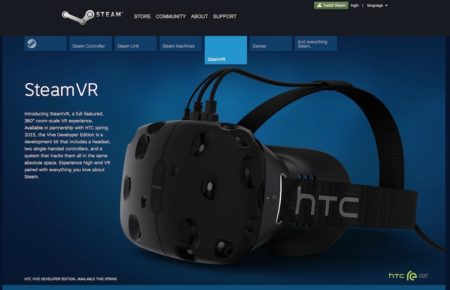The Khronos Group, an industry consortium behind such open industry technology standards such as OpenGL and WebVR, has recently announced a call to establish standards for the emerging virtual reality (VR) industry.
Solving the Fragmentation Problem
Khronos is interested in defining a cross-vendor, royalty-free, open standard for access to modern virtual reality (VR) devices. This will solve the fragmentation now in the industry where software and hardware vendors have a myriad of options to choose from.
Platform fragmentation is forcing VR applications and engines to be ported and customized to run on multiple VR runtimes. This also means VR sensors and displays need driver-level integration with all of these competing proprietary VR platforms as well.
This fragmentation slows the widespread availability of compelling VR experiences, creating added expense for developers wishing to support multiple VR devices, and hindering the adoption of innovative user interface technologies.

01 – The new HTC and Valve co-produced VR headset. The new device gives Oculus Rift serious competition.
“Khronos has been on the forefront of advanced graphics and system APIs for over 15 years, and in keeping with that tradition and obligation to the industry at large has embarked on a new, vitally needed set of APIs and standards for the emerging VR market. We applaud the industry-leading companies that are coming together as Khronos members for this endeavor, and expect the whole industry will share our sentiment,” said Jon Peddie, President of JPR.
What the VR Standard Will Entail
The new standard defined by the Khronos Group will include items like APIs (application programming interfaces) for tracking of headsets, controllers, and other devices, and for easily integrating devices into a VR runtime.
Such a standard will accelerate the ability of software developers to port their VR applications to any VR system that conforms with the Khronos standard. The group is today calling on the industry to participate. Design contributions from any Khronos Group member are welcome.
Industry Support is High
“Khronos’ open APIs have been immensely valuable to the industry, balancing the forces of differentiation and innovation against gratuitous vendor incompatibility. As virtual reality matures and the essential capabilities become clear in practice, a cooperatively developed open standard API is a natural and important milestone. Oculus is happy to contribute to this effort,” said John Carmack, CTO, Oculus VR.
“The number of VR systems on the market is growing rapidly. Most of these require separate API support from the developer, which is causing huge fragmentation for consumers,” said Gabe Newell of Valve. “Khronos’ work on a standard API to enable applications to target a wide variety of VR devices is an important step to counter that trend.”
“NVIDIA is excited to see the industry come together around an open standard for VR,” said Jason Paul, general manager for virtual reality at NVIDIA. “NVIDIA is fully engaged at Khronos on building a new standard that drives wider adoption and cross-platform content for VR.”
“The virtual reality industry has garnered massive attention and investment, resulting in validation of virtual reality technology. We believe continued growth will require standardization and AMD supports the Khronos initiative for an open standard,” said Daryl Sartain, director and worldwide head of VR at AMD.
For more information and to join the call to form the VR standard, go here: www.khronos.org/vr



Reader Comments
[…] Source link […]
Comments are closed.